When they say folding phone, the label says it all. Unlike regular smart “cakes”, folding phones consist of a central hinge and two sides that fold together. The hinge serves as an axis for folding and unfolding the device and divides the two displays, which, after unfolding, merge into a single one. Over the years, Samsung has developed the unique hinge technology of the Galaxy Z Fold series, and the mechanism is also improving with each new model. In addition, the Galaxy Z Fold models are getting slimmer every time, so we can really take them with us everywhere.
In the Samsung Newsroom, we looked at the historical development of the Galaxy Z Fold series and how manufacturers arrived at the current thin, compact and yet robust design.
(2019) Galaxy Fold
Folding phones are coming: opening and closing
Folded thickness: 15,7 – 17,1 mm Thickness in unfolded state: 6,9 – 7,6 mm Weight: 276 g
The lifestyles of smartphone users vary and so do their different needs. Samsung responds to this every year by developing new advanced technologies. The Galaxy Fold was introduced to the world in 2019 and brought a complete revolution to the phone world – it was the first model to offer natural work with a large display when unfolded and at the same time a compact design after folding. In addition, opening and closing the phone became a new type of mobile interaction, and thanks to the previously unseen hinge system, everything worked naturally and intuitively.
The folding technology looked familiar, it was easy to work with and, moreover, it protected the display very effectively. The phone opened easily like a book and was flat and thin when closed. The important thing was that it fit in the palm of your hand. When closed, the first Galaxy Fold was only 17.1 mm thick, and the era of smart folding phones could begin.
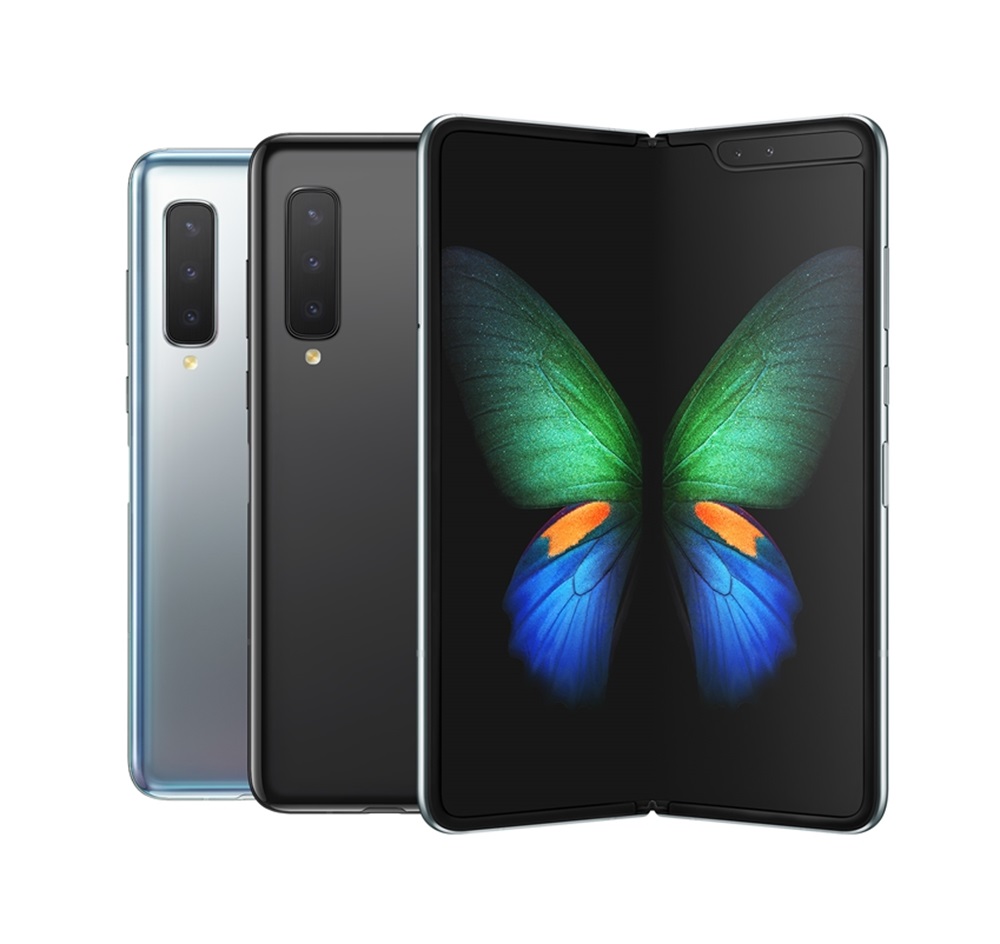
(2020) Galaxy Z Fold2
Flex mode: Hideaway Hinge and Sweeper technologies
Folded thickness: 13,8 – 16,8 mm Thickness in unfolded state: 6,0 — 6,9 mm Weight: 282 g
The successor to the pioneering Galaxy Fold was introduced in 2020. And the Galaxy Z Fold2 immediately raised the bar in the world of folding phones by a significant amount, mainly thanks to its sophisticated new design. The most interesting innovation was the Hideaway Hinge technology, i.e. the internal construction of the hinge, which remained completely hidden from the eyes while allowing easy and reliable opening and closing. In addition, thanks to it, users could place the phone on a table with the display angle set at any angle, which made it easier to take selfies and video calls in Flex mode.
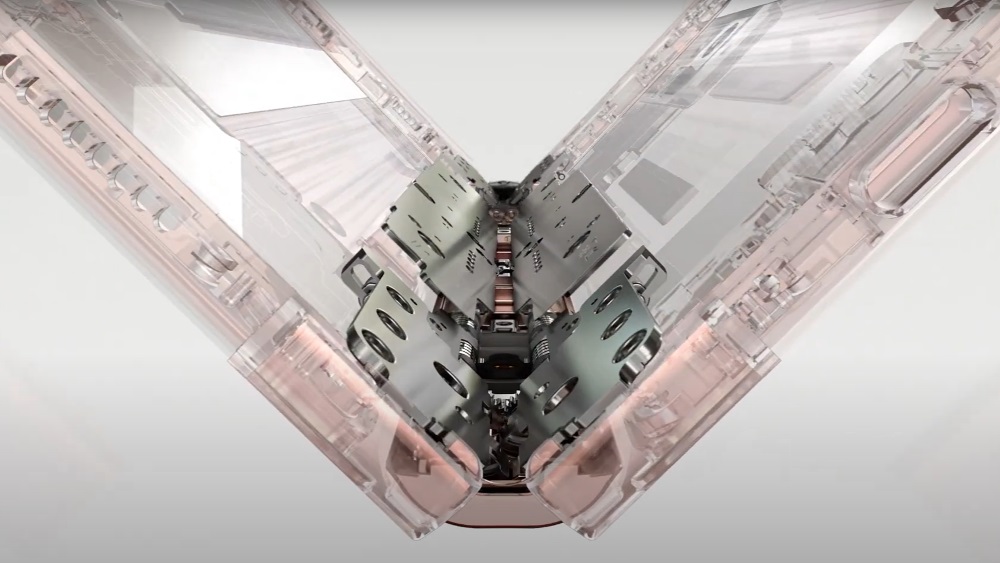
The Hideaway Hinge consisted of over sixty parts with cams and springs. Owners could thus use the phone not only in the open and closed state, but also in practically any other angle. Thanks to the optimal design and location of the Hideaway Hinge, the Galaxy Z Fold2 was even thinner than the previous model, measuring only 16.8 mm when closed.
With the new design, the hinge was folded every time in both the open and closed states, which inevitably meant a gap between the front of the device and the hinge cover. In order to make this gap as small as possible, Samsung needed to develop a component that would be durable and elastic without increasing the dimensions of the device. Finally, manufacturers took inspiration from vacuum cleaner brushes and used precisely cut optical fibers to create the Sweeper technology. This protected the display from dust from the surrounding environment and from other impurities that could penetrate through the gap.
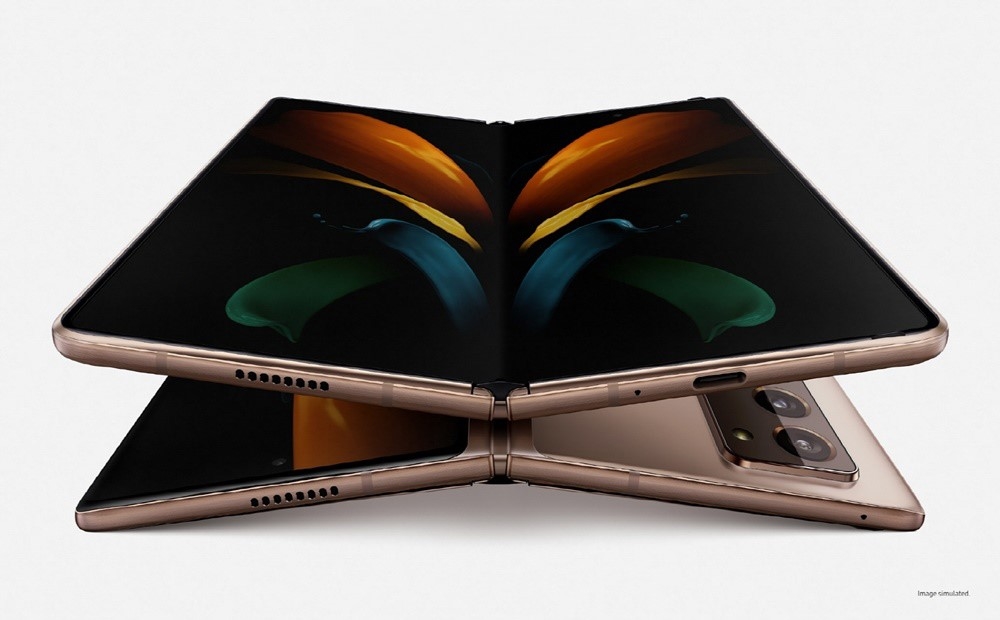
(2021) Galaxy Z Fold3
Solving the biggest problem of folding phones: how to protect them from moisture
Folded thickness: 14,4 – 16,0 mm Thickness in unfolded state: 6,4 mm Weight: 271 g
Today, we take it for granted that phones are waterproof. However, this did not originally apply to folding models, their construction did not allow for a waterproof design. And if water or any other liquid got inside, there would, of course, be immediate problems.
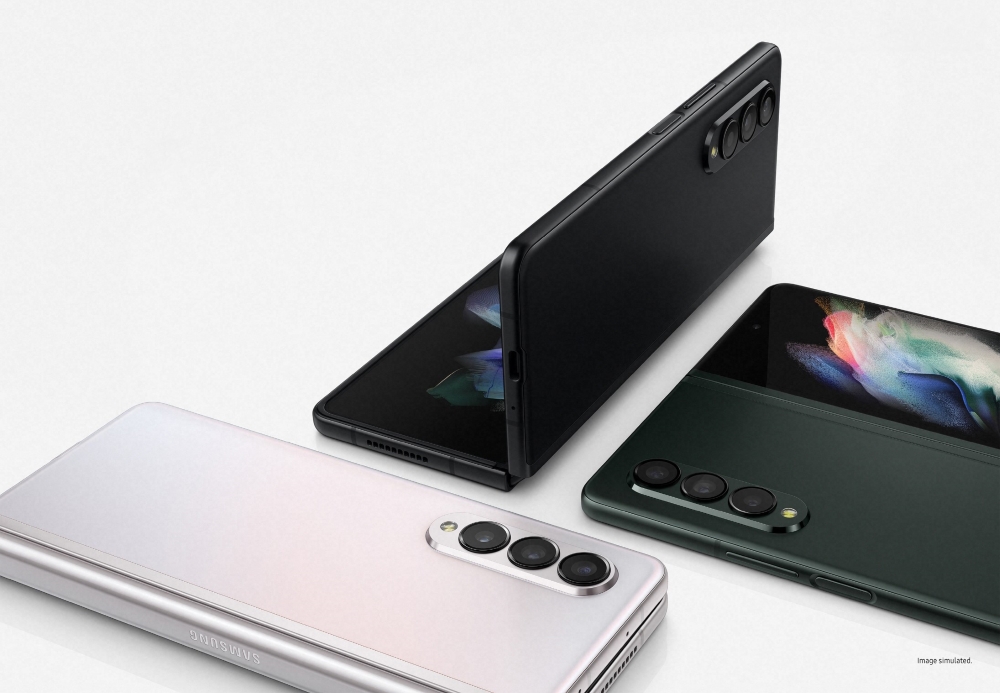
The first folding phone to crack this nut was the Galaxy Z Fold3. Manufacturers used waterproof protection in two places – in the outer part of the display and on the hinge. A thin rubber band protected the display from moisture and dust, the metal parts of the hinge were made of corrosion-resistant material with a thin layer of durable grease. Also, the connecting part between the two halves of the phone was protected by a silicone seal that hardened only after application (CIPG). Flexible printed circuit boards (FPCBs) were also used to protect sensitive components.
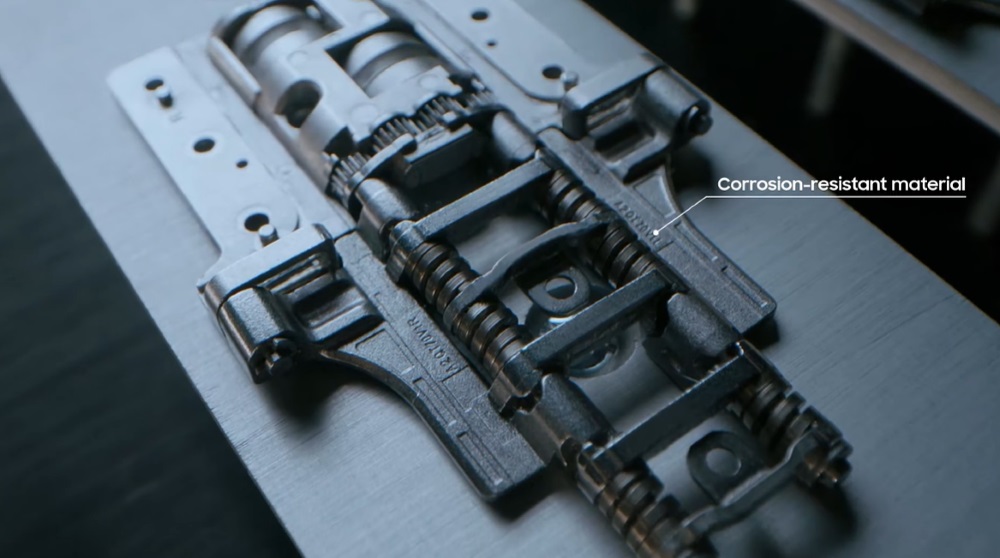
The new robust Armor Aluminum material, resistant to impacts, damage and scratches, also contributed to the thinner and lighter, but at the same time durable construction of the Galaxy Z Fold3.
Manufacturers used Armor Aluminum material in two corners of the phone and in the cover around the hinge. Robust protection was definitely needed – as mentioned, the Hideaway Hinge was made up of a series of miniature components that had to move absolutely smoothly and fluidly, and the slightest deformation would be reflected in opening and closing.
The mentioned Sweeper technology protecting the gap between the hinge and the phone body has also undergone an interesting development. Due to the thinner construction, the bristles of the brush have also been shortened, which contributed to a more elegant design, but nothing has changed in terms of reliable protection. The Galaxy Z Fold3 thus measured only 16 mm when folded.
(2022) Galaxy Z Fold4
Changing the rotary design to a linear one: thinner and lighter hinge
Folded thickness: 14,2 – 15,8 mm Thickness in unfolded state: 6,3 mm Weight: 263 g
The Galaxy Z Fold4 came to the market in 2022 and marked another significant reduction in both weight and thickness. At 263 grams, the phone weighed almost 20 g less than the Galaxy Z Fold2 at 282 g. The thickness in the closed state was only 15.8 mm, which was a record at the time. And again behind this were significant technological innovations.
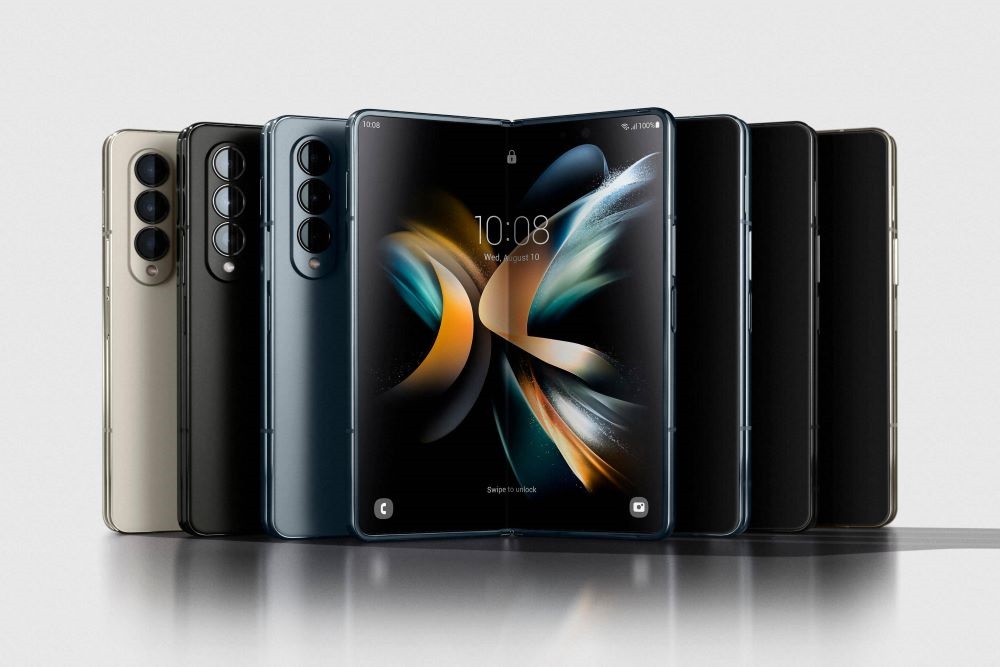
The hinge of the Galaxy Z Fold4 model was 21% lighter than the previous type and perfectly matched the shorter but wider front display. In previous models, gear wheels meshed together, but in the Galaxy Z Fold4, the design of the hinge has fundamentally changed – the rotary movement has been replaced by a linear one. Thanks to this, the weight, thickness and number of parts decreased, which simplified production and improved the durability of the entire device. The Galaxy Z Fold4 model thus boasted the thinnest and lightest hinge of its time, while offering the same level of protection from the surrounding environment as its predecessor.
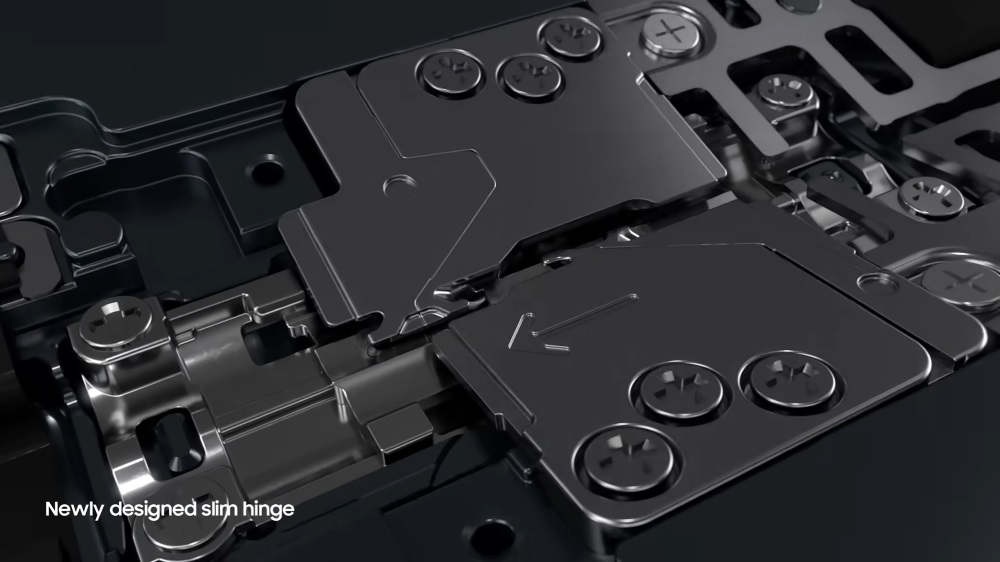
(2023) Galaxy Z Fold5
Flex Hinge: The secret of a perfect folding structure
Folded thickness: 13,4 mm Thickness in unfolded state: 6,1 mm Weight: 253 g
A new generation of folding phones was introduced in 2023 in the form of the Galaxy Z Fold5 model. The manufacturers said goodbye to the Hideaway Hinge design and replaced it with the brand new Flex Hinge hinge mechanism, which was another significant step forward. The new mechanism meant a more flexible design and enabled the development of other interesting functions. The basis of the Flex Hinge construction are four shafts and a double rail along which the individual parts slide. Thanks to this, both halves of the display can be unfolded without a visible gap or fold between them.
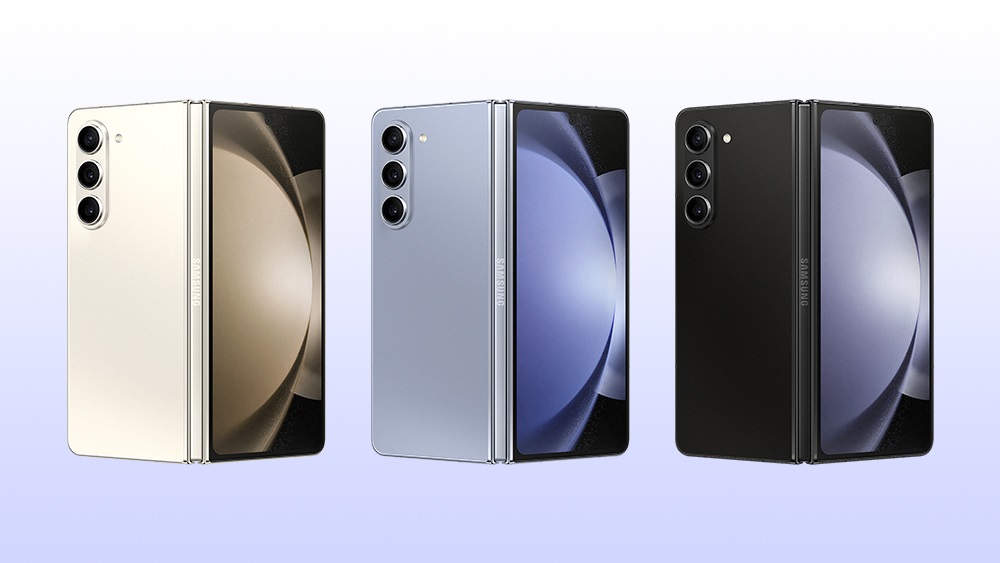
Thanks to the new mechanism, the manufacturers managed to present the lightest and thinnest model in the entire Galaxy Z Fold series so far. It is more than 2 mm thinner than the previous phone, with a maximum thickness of only 13.4 mm when folded. It weighs 253 grams, 10 grams less than its predecessor. The elegant shapes of the device stand out when viewed from any angle.
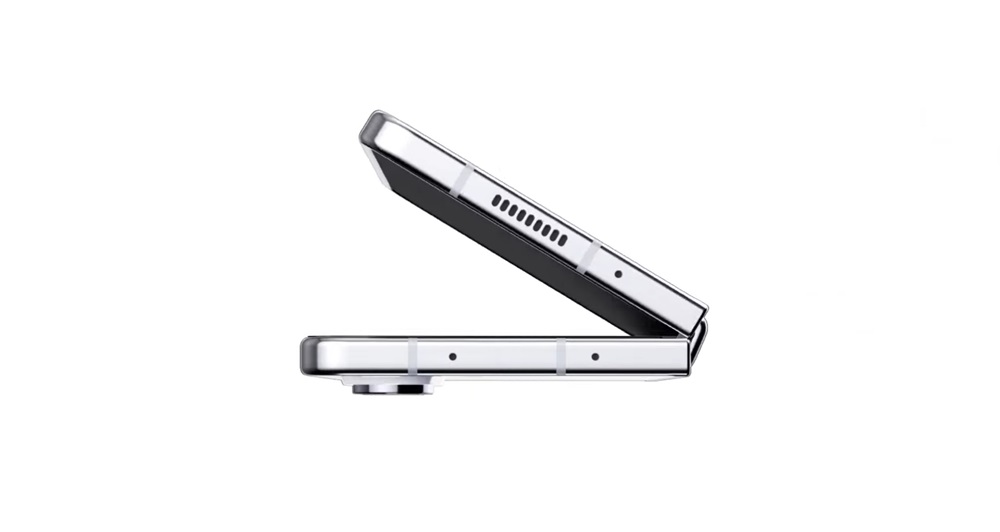
Samsung improves its Galaxy Z Fold series every year, thanks to, among other things, precise engineering and carefully followed manufacturing procedures. Developers and manufacturers pay attention to every detail, from the internal mechanical structure to small design elements. Thanks to the new hinge technology, which is the basic design element of every folding phone, the new devices are thinner than their predecessors, which significantly improved the attractiveness and practicality of the Galaxy Z Fold series. Samsung wants to continue to build on its tradition of excellent foldable smartphones and offer more and more new products to an ever-increasing number of customers.
The latest generation will be presented on July 10 in Paris at an event Galaxy Unpacked.
Source: www.nextech.sk


